Embroidery on a denim jacket with your own hands, patterns, templates are extremely popular, as several decades ago. Today, various types of embroidery are considered fashionable. How to make a pattern on jeans, how to embroider a heart on jeans, what is needed for this, where to place it and more below.
- Recommendations
- Varieties of decor
- Cross stitch
- Embroidery with satin stitch
- Sequin embroidery
- Beadwork
- Machine embroidery
- Schemes and drawings
- Materials for work
- Tips for choosing materials
- Placement of embroidery and combination with other parts of the set
- On jeans
- On a denim jacket
- Transferring a design onto denim
- Gentle care
Recommendations
When embroidering on jeans, it is necessary to take into account not only the beauty and style, but also the convenience of placement and care. It is important that the satin stitch embroidery on jeans is in a place where it would be easy to care for and it is subject to minimal impact. Also, when starting to create a decor, it is necessary not to deviate from the presented scheme, if we are talking about novice craftsmen.

You should do everything as carefully as possible, especially when creating a pattern with the addition of sequins and beads. It is necessary to use a double seam so that the accidentally created product does not tear. Before starting any work, you should decide on the sewing technique, remove everything unnecessary. Use only proven technologies, it is advisable to buy a ready-made kit for embroidery on jeans.
Varieties of decor
You can decorate jeans using different materials. For example, you can make decorations using beads, glitter, satin ribbons and textiles. At the same time, you can decorate the surface of denim products using different techniques: cross stitch, satin stitch, stones and others.
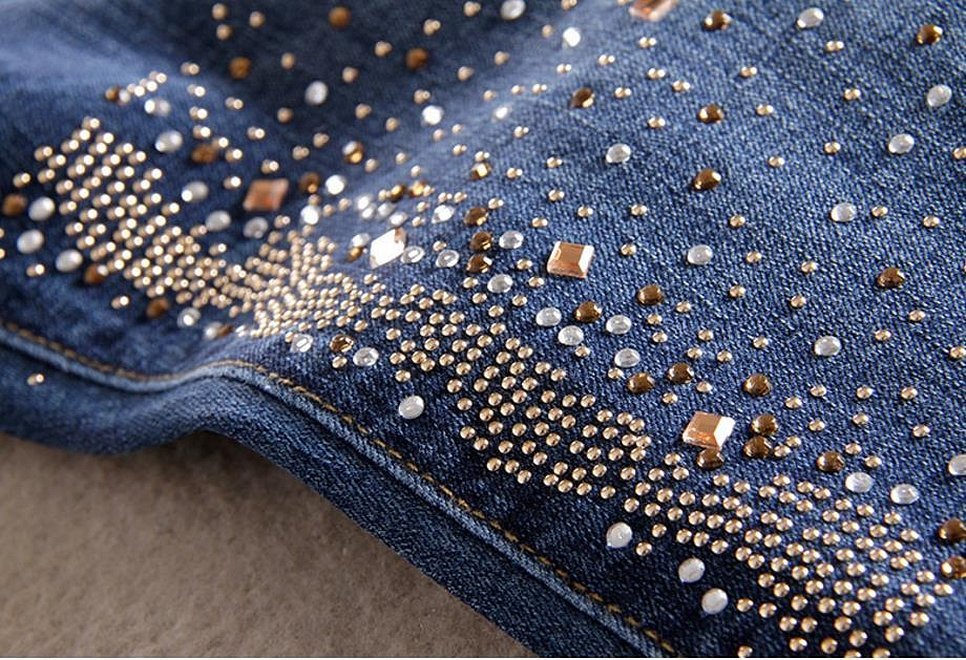
Cross stitch
Cross stitching on jeans is extremely popular today. When watching any show, especially the Dolce & Gabbana fashion show, you can see how many beautiful embroidered items there are. Before decorating old or new jeans, you need to make a step-by-step plan for decorating the items to your taste. Skilled needlewomen and just beginners recommend doing such an element as embroidery on jeans with your own hands, satin stitch, but you can also make a beautiful pattern with a cross stitch.
In this case, you can make various mountains on clothes with feathers, dandelions, geometric patterns, Mickey Mouse, flowers, butterflies, abstract patterns, geometric patterns, hearts, stars, berries, animals and cartoon characters. After creating a beautiful design, you can complement the embroidery on jeans of various classes with fittings, sequins and other elements.
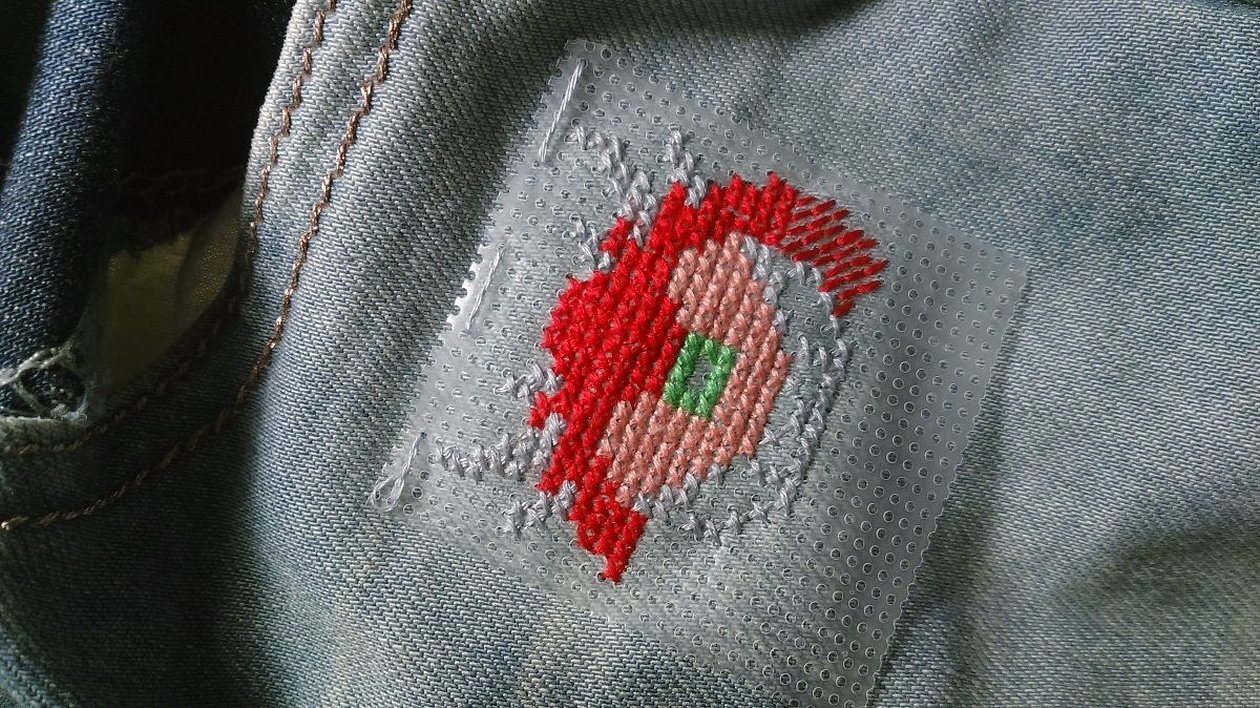
Embroidery with satin stitch
Cucumber embroidery on denim involves creating even stitches that are directly adjacent to each other. Using this technique, you can make a pattern on different fabrics, but a dense, smooth material is best. It is necessary to make a note that when washing, if floss was used for embroidery on a denim jacket with your own hands, the material may be damaged. To prevent this from happening, before work, you need to dip the floss in boiling water. Then the threads will not fade. Another option is embroidery with light threads.
You can complement satin stitch embroidery by using lace. It is always delicate. Lace items always speak of fine taste, since lace can be narrow or wide, white, black or flesh-colored.
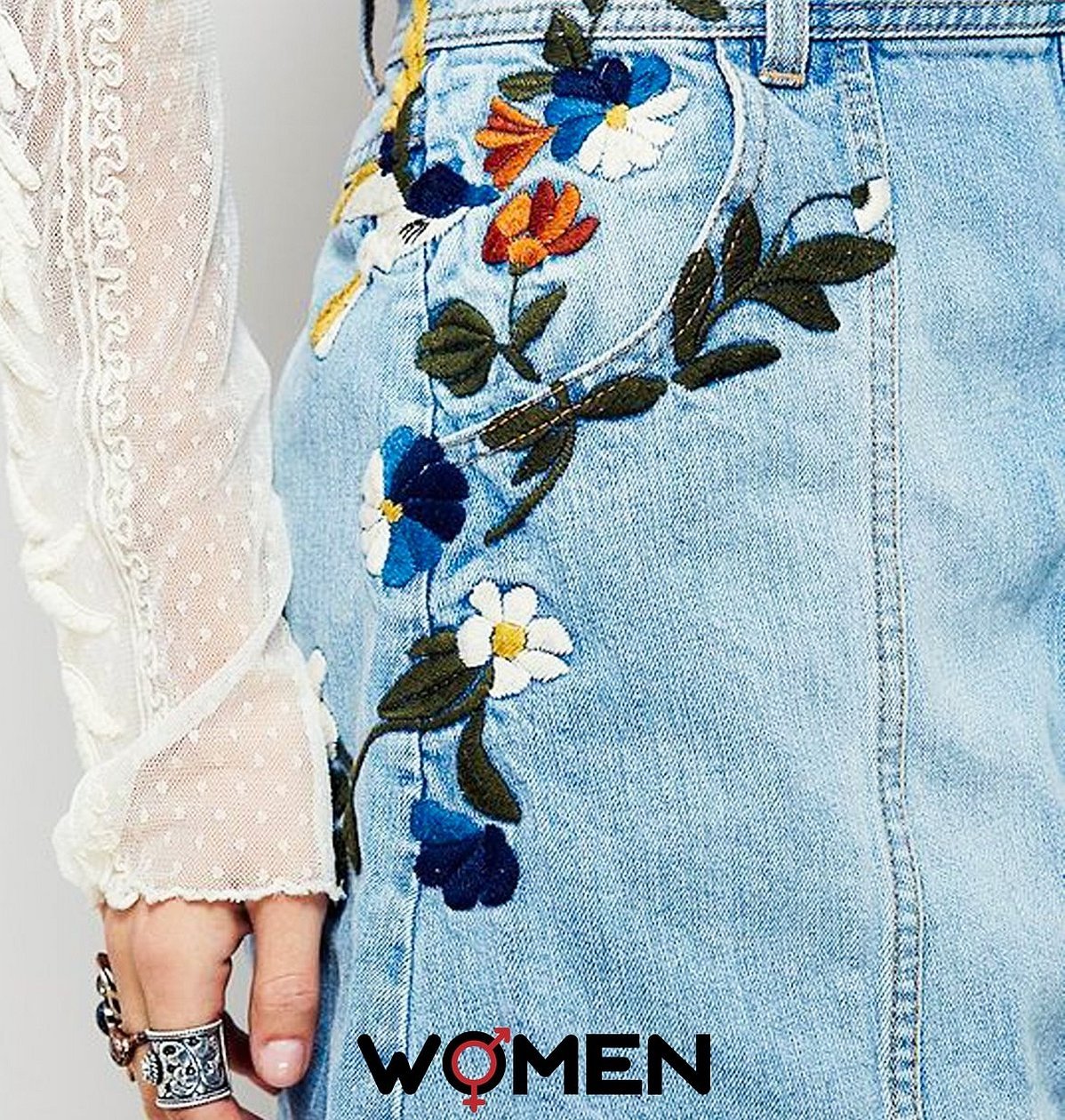
Sequin embroidery
Do-it-yourself embroidery on shorts using multi-colored, gold and silver sequins is another interesting type of decor for decorating jeans. Here you can make decor using additional fabric, for example, a thin layer of canvas, high-quality felt or 100% cotton. Only then glue or sew the decorative element as an applique. This can be done not only with your favorite and new jeans, but also with a fashionable denim jacket. It is also possible to make a geometric applique on the denim sides with pockets or near the pockets. As for the outline, it is not necessary to outline it.
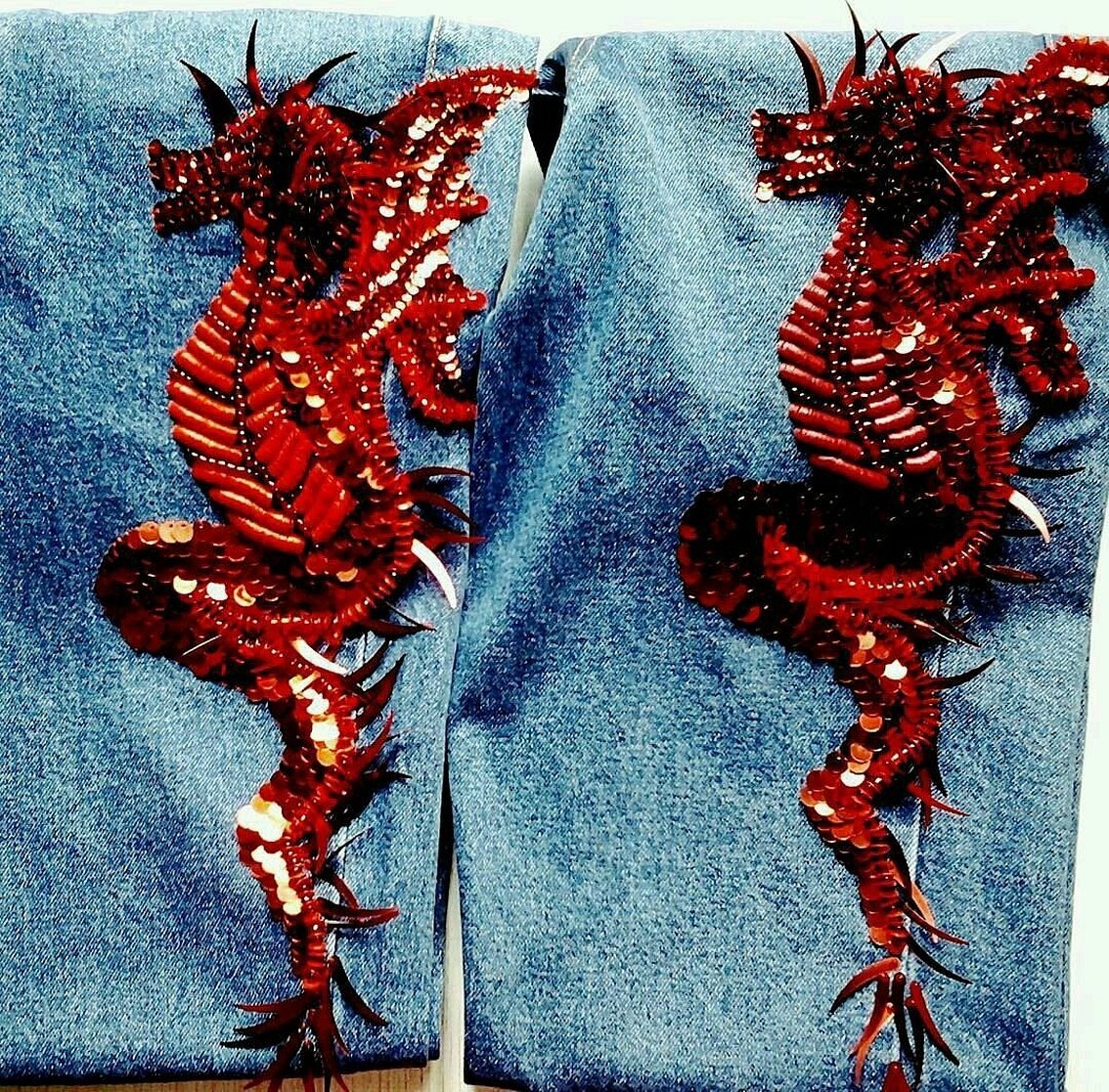
Beadwork
For any embroidery floss on jeans and decoration, you can take any beads, which are most often found on store shelves. They can be plastic, round, cylindrical, square, cubic and triangular. There are also beads called bugles, charlotte, delica, pony, berry, drops, twin. You can embroider in different techniques.
The most famous are the techniques of line, stem, arched seam, seam in attachment and monastery seam. In this case, the stitches can be made both horizontal and vertical. You can do bead embroidery on jeans using any pattern. It is not necessary to take a ready-made set, you can simply study the information on what can be embroidered on jeans.
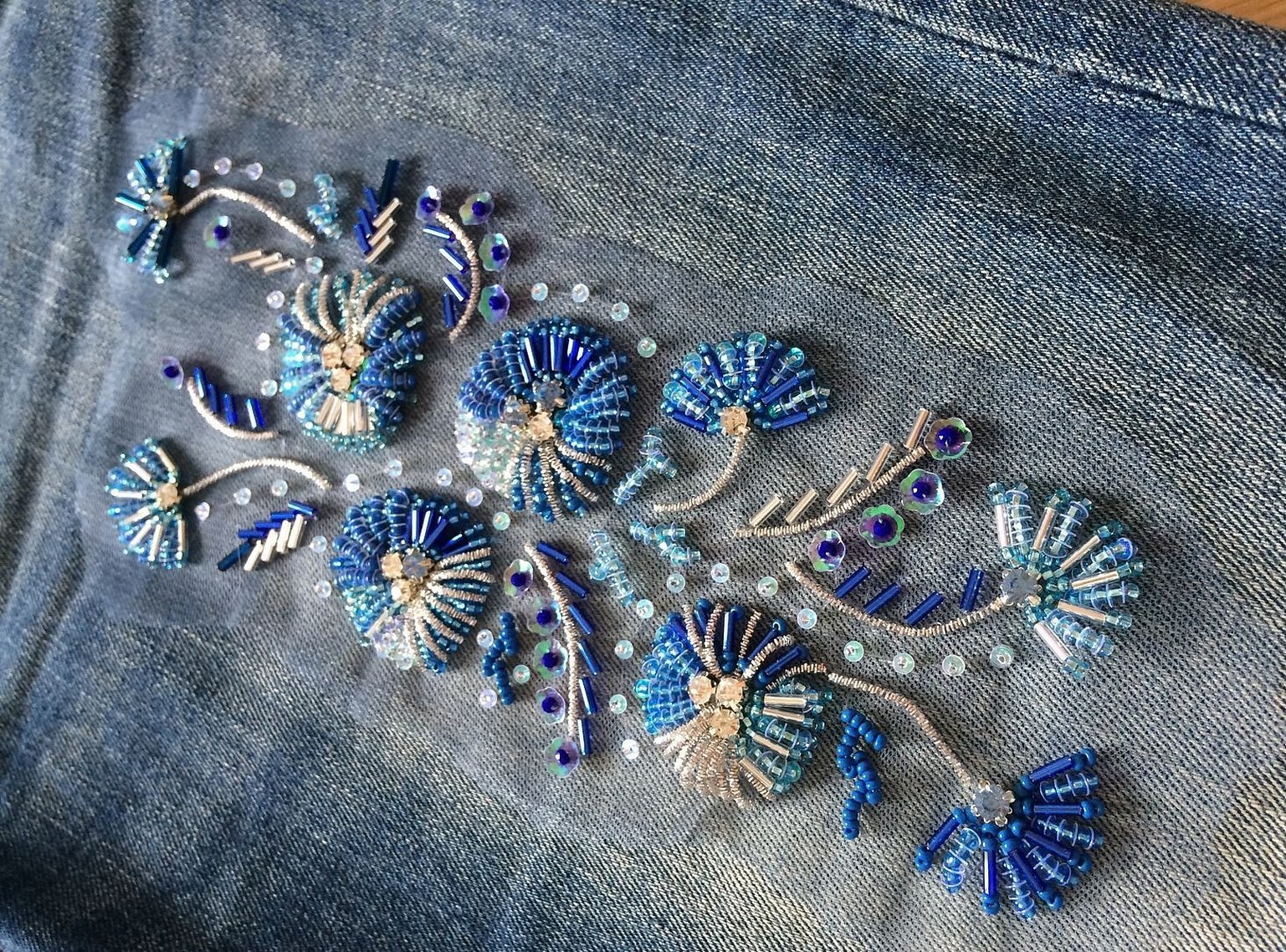
Machine embroidery
Machine embroidery items on a denim jacket made by hand are especially popular today. They look perfect on jeans and jackets. Many brands use it to make things beautiful. You don’t need to think that such decor is only for women. It can be for men. The main thing is to make the pattern more brutal. You can make decoration for a white jacket, a black leather jacket, an elongated denim jacket, a green parka, and a khaki bomber jacket.
Please note! The most suitable place for such decoration is the back. This is the place where you can use various locks with buttons and seams. The back can be complemented with various fittings, chains and beaded threads.
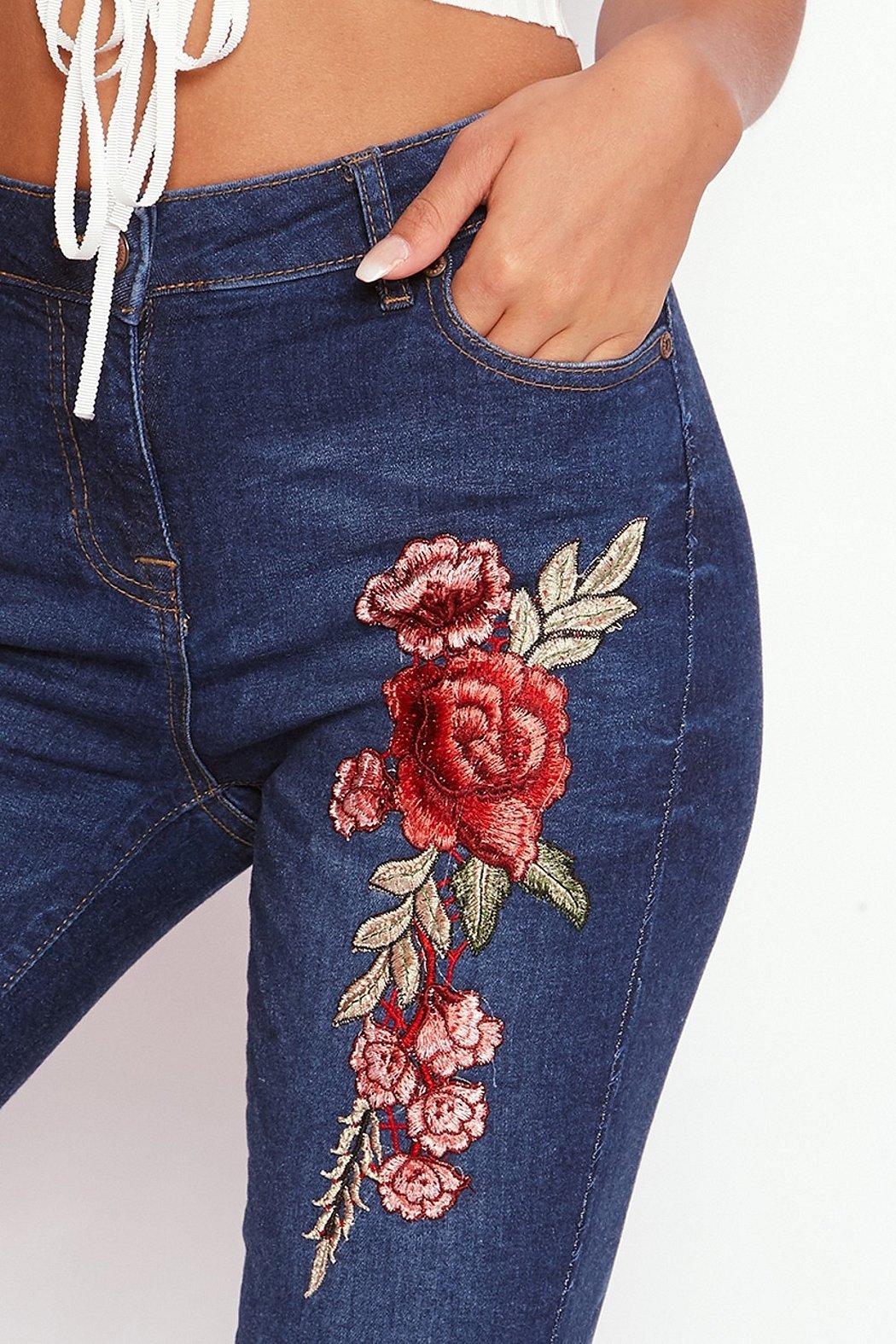
Schemes and drawings
Satin stitch patterns can be found on the Internet. They are also freely available to many needlewomen along with descriptions of the techniques used to form the pattern. It can be placed on the sides, back and front. You can see the most successful placement options and patterns at fashion shows or in magazines. The main thing is to do this not in folded areas, where they are most vulnerable to abrasion during wear or washing.
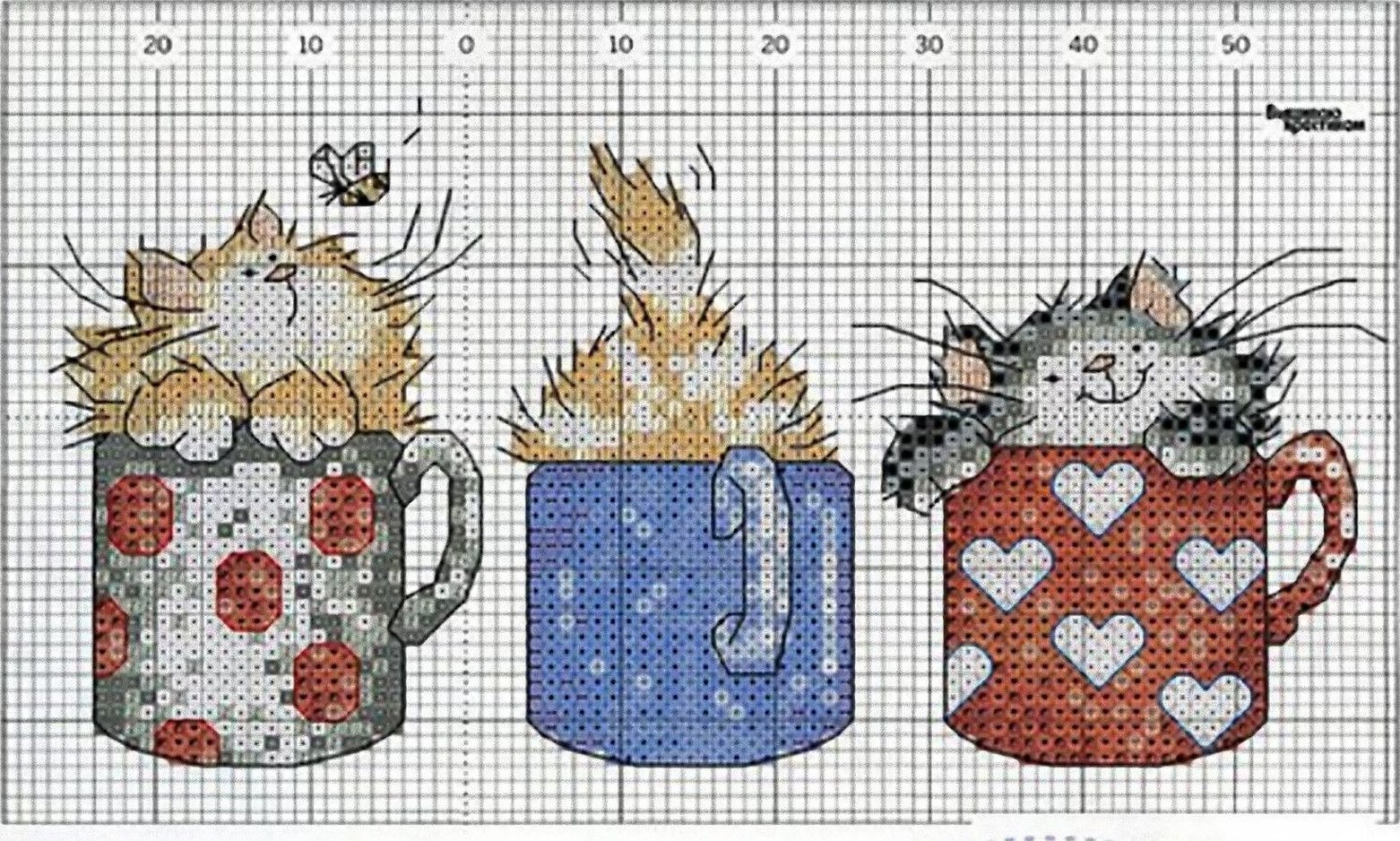
Materials for work
When creating a design on jeans or a jacket, you can choose any available materials. For decoration, you can take any accessories. For example, you can decorate the products with sewn-on buttons, rings, fasteners, rivets, chains, flowers, pendants, thermal decorations, twisted, metallized and waxed laces, clips, pendants, headbands, keychains, pearls, Swarovski beads, cabochons, buttons, brads, feathers, leaves and volumetric decorations. You can also use craquelure, wooden blanks, glitter and sequins to decorate finished products.
Tips for choosing materials
There are different types of threads. Cotton threads are the most common. The standard version is 8 meters. The composition is 100% cotton. There are also wool and acrylic varieties. The former are used to form tapestry products, and the latter to decorate pillows and rugs.
There are also linen, metallic and melange threads. Linen floss is a thin, silky and strong thread made with permanent dyes. Metallic floss is produced with a gold, pearl, mother-of-pearl and silver coating. It looks good for creating satin stitch embroidery. Melange floss is a gradient type of thread, in which one tone smoothly transitions into another. This is achieved by dyeing the thread with a certain color of varying intensity.
There are also luminous threads, satin viscose and multi-color threads - threads that have mixed shades.

Placement of embroidery and combination with other parts of the set
You can place such an element as embroidery on a denim jacket anywhere, combining it with other parts of the set. It will be advantageous to place it on the back, if we are talking about a denim jacket, and also near the pockets, if we are talking about decorating denim trousers.
On jeans
To place the decoration on jeans in a favorable position, you need to think about the fact that the pattern is not subject to deformation and does not spoil the appearance of the entire product as it wears out. Accordingly, embroidery should be done in a place where there are no bends. For example, it cannot be placed on the knees or hip areas. Also, you should not do embroidery on the back and front pockets. The best places for decoration can be found on the Internet. So, it looks great on the bottom of the pockets, on the side, near the hips. The pattern along the entire length of the jeans and small inserts from patterns look interesting.
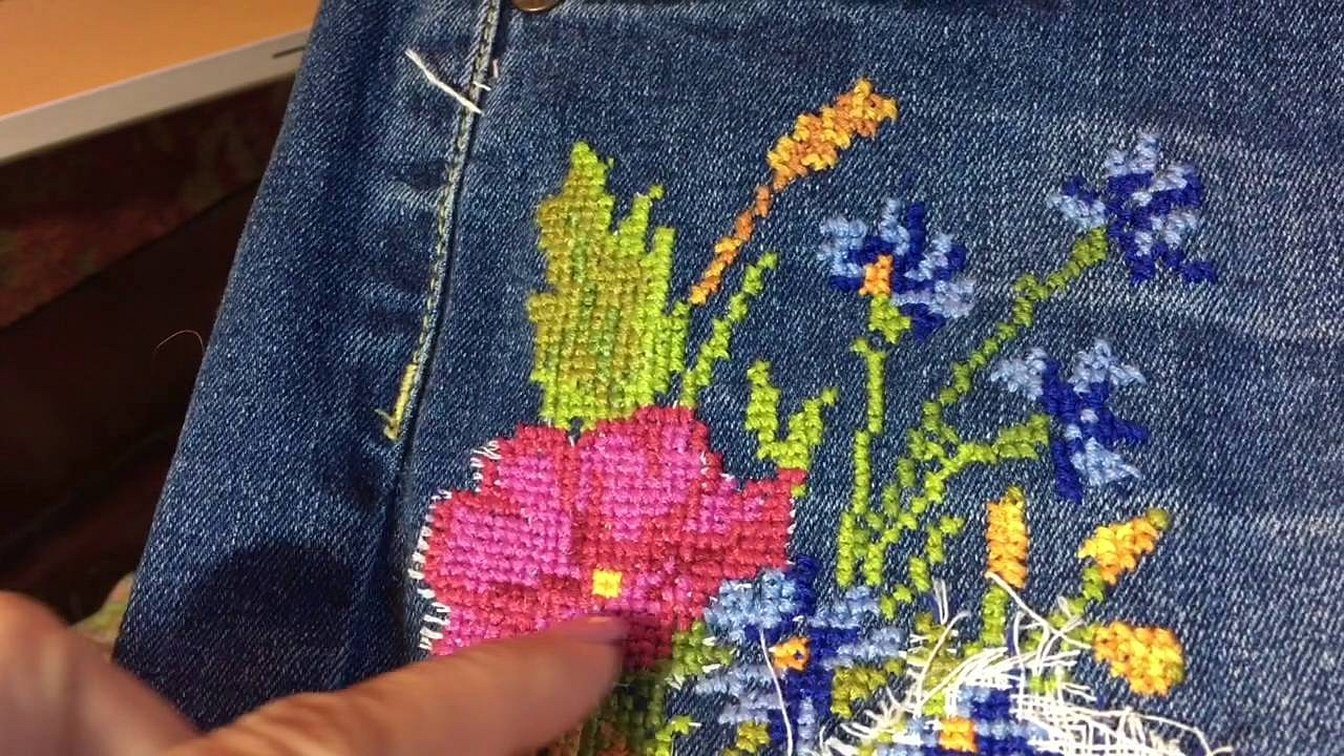
On a denim jacket
As for the jacket, the most advantageous place for such an element as cross-stitch on jeans is the back. The design on the chest and ends of the jacket looks no less interesting. Fashion catalogs from designers offer decoration in the place where the zipper is located and where the sleeves end. Shops across the country also offer jackets with embroidery on the sides of the sleeves, on the hood and near the front pockets.
Transferring a design onto denim
You can transfer a drawing to the surface of jeans using carbon paper and tracing paper, the dusting method, solvent, laser printer and thermal transfer paper. You can also transfer a drawing using a washable marker. The applied lines will disappear after some time. You can also use interlining for these purposes. All you need is to apply a sketch to white interlining fabric, which will then be cut out and attached to the jeans with a hole using an iron.

Gentle care
Only careful care can ensure the durability of embroidery on denim. Here are some useful care tips:
- Before washing, zip up the jeans and turn them inside out;
- Do not use products containing bleach for washing;
- Denim fabric should be washed at a temperature of no more than 30 degrees;
- It is best to wash jeans and jackets by hand;
- The embroidery itself should be washed straightened, placing the embroidery, moistened with water, face up.
In addition, when washing, it is recommended to avoid using various conditioners. It is better to rinse jeans with cool water. Denim products cannot be twisted or wrung out. You just need to hang them up and let the liquid drain. Dry the fabric in a warm, but not sunny place, in a straightened form. Ironing is possible, but not recommended, especially in places where the decorative part is made. It is best to iron with a steamer. In this situation, it will be able to preserve the convexity with volume.
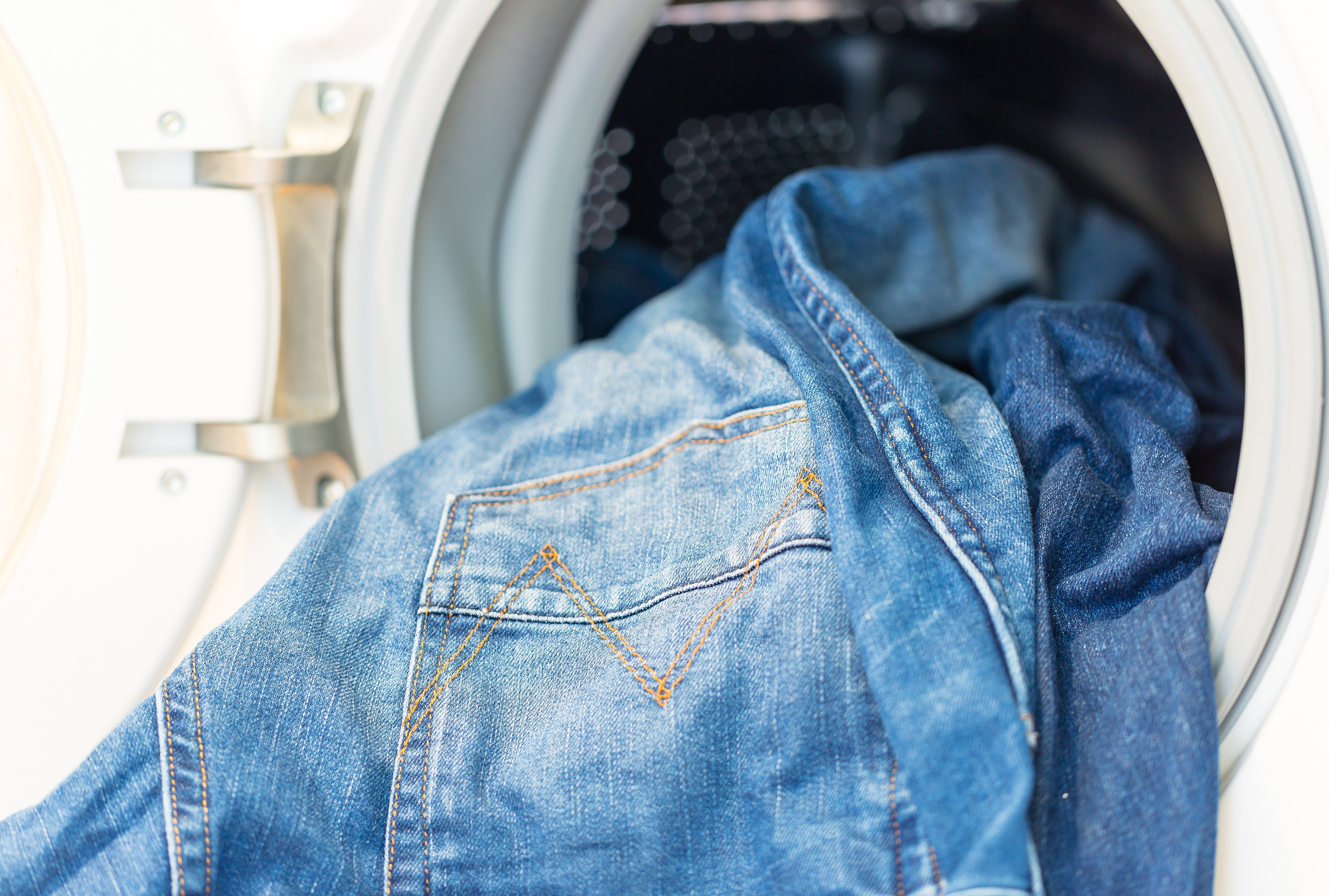
In general, there are different types of embroidery on jeans and patterns for the most successful placement of the pattern on the surface of the product. The main thing is to follow the instructions provided by users and place the patterns in the way they will look best.




